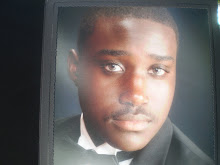How does Andrew Sullivan construct “What is a Homosexual?” As you analyze the structure of this piece, try thinking about where Sullivan ends his essay. Then, work backwards. What does he establish (and, most importantly, why) to reach that endpoint?
In the story “What is a Homosexual?” by Andrew Sullivan, he states facts and his own experiences with what a homosexual is. He talks about how people deal with their sexual orientation day-to-day. Also about his. He goes into detail about how every homosexual child will learn the rituals of deceit, impersonation, and apperarance. Many have to disguise themselves to fit into the "normal" society world that we live in. He also talks about how many have debated on the issue that homosexuality isn't a choice, but an orientation. I agree, because who can tell what a child will be when they are born? Noboday can! You can't say to a child when it's delivered that they will either be gay or straight. They(The kid) has to make their on assumption of that issue, and learn from their own mistakes.
working backwards to forwad in this essay. Sullivan talks about how homosexuals remain hidden and wrapped in theirt self-contempt. Which their emotional development is often stunted and late. He also states how they surround themselves in fields that go with their idenity. some never come out, because of it(jobs), and that's how they earn a living, so they have to "hide" who they really are. A lot of kids suppress their "natural emotions," and they find outlets to express themselves. like. music, theater, and art. Society isn't that much open to diversity when it comes to this topic. the society goes of stereotypes and discrimmination. I agree, because not everybody in this world will all get alone. Like discrimmination will always be their. Like, I live in a predominantly white neighborhood and there are neighbors that don't like my family because of our race. I just would like to say that you can't change people, they have to relize for themselves and change they way they think/act on their own terms.
Monday, February 8, 2010
Subscribe to:
Post Comments (Atom)

So close to 400!
ReplyDeleteI wonder how discrimination against gays is similar to discrimination against certain races. On one hand, both shape identity, but I imagine that the realization of and coping with that discrimination can be quite different. Given what Sully's said, what do you think?